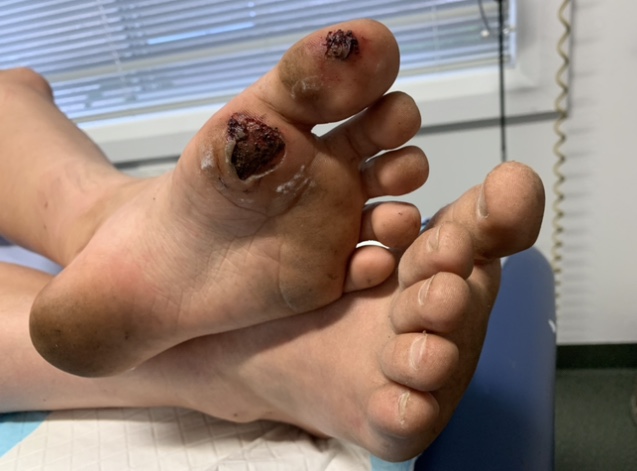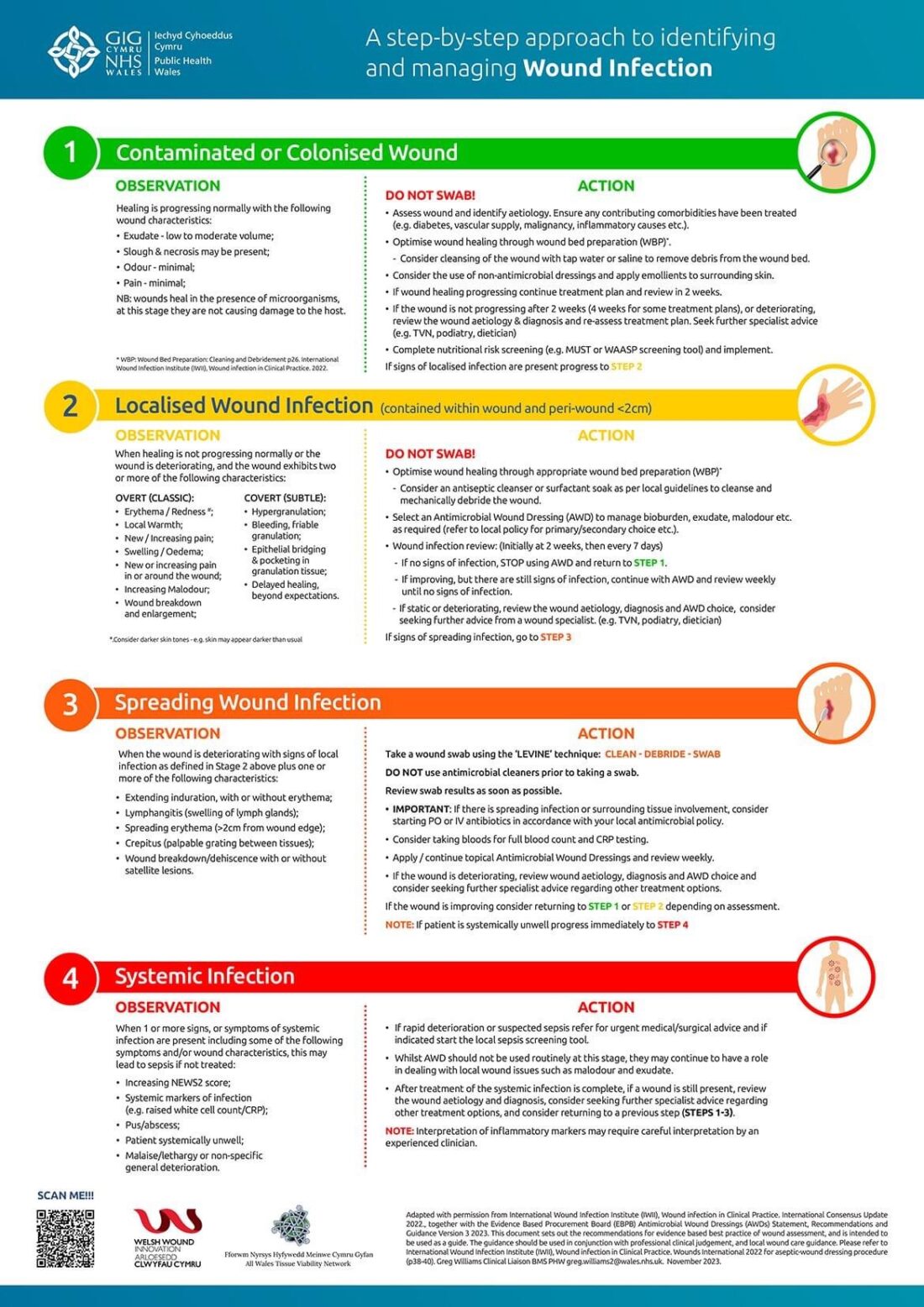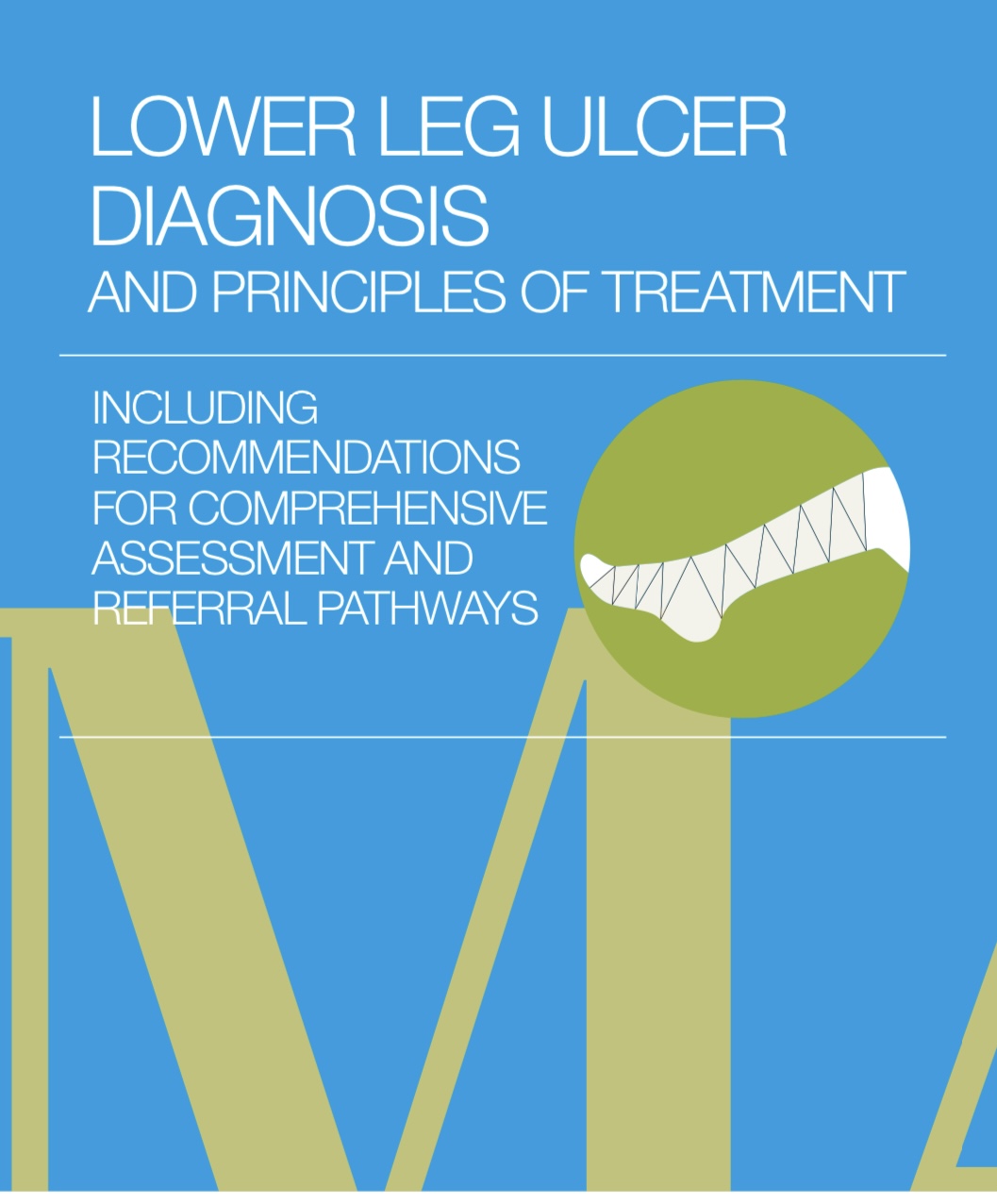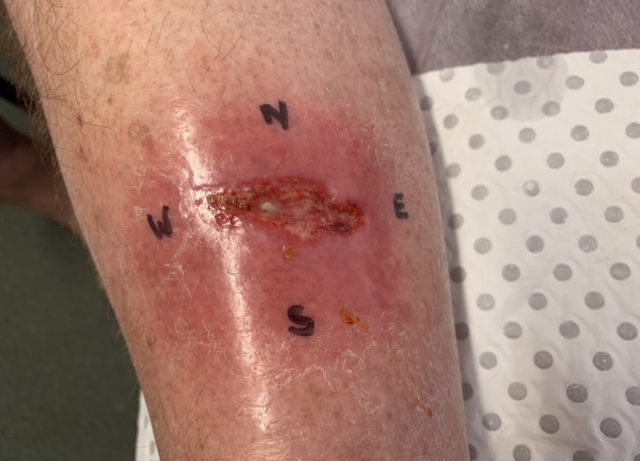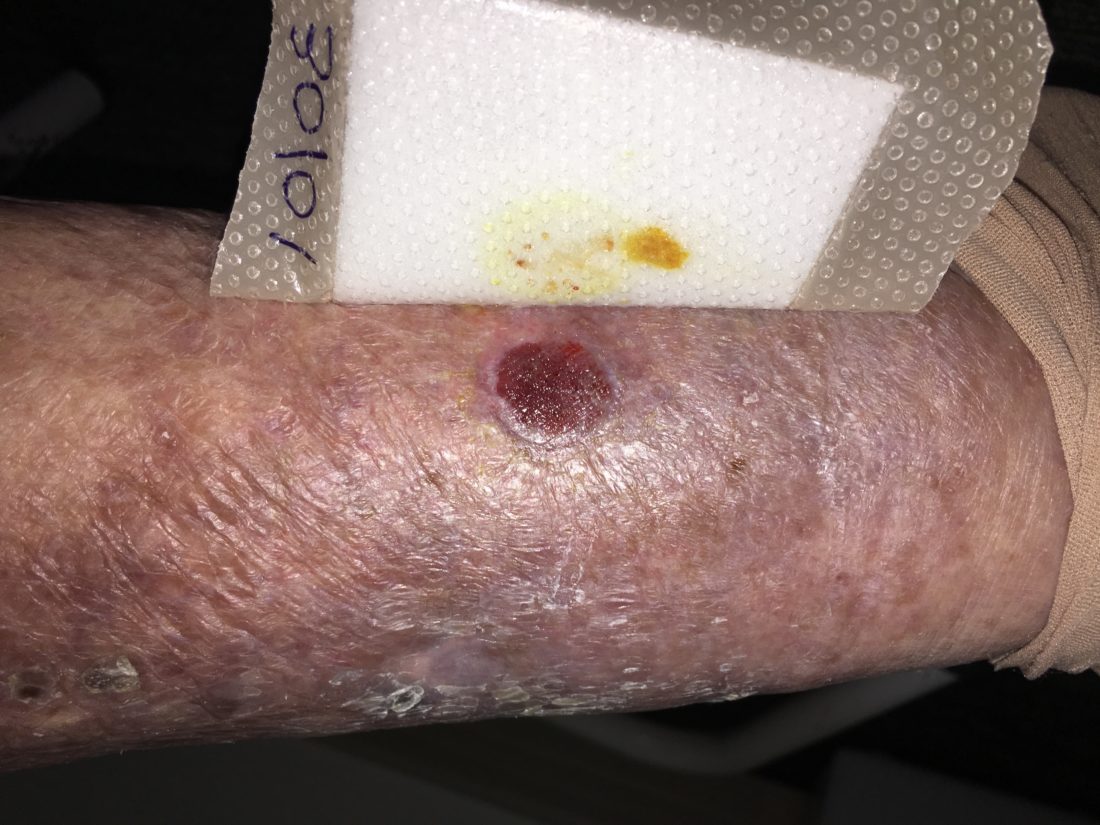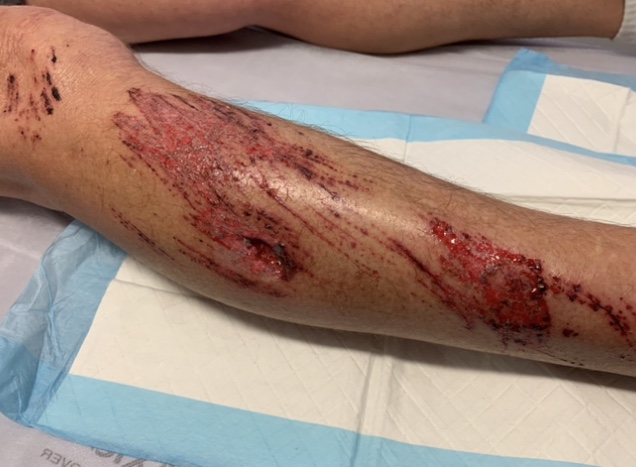9 January 2025
In
News
By
thewoundguy
Welcome to 2025. Wishing you all a year of good health, safety, learning and fulfilment. As members of the Woundieverse, our combined mission is to assist those with hard-to-heal wounds experience a better quality of life. So it is that we begin this new year
5 December 2024
In
News
By
thewoundguy
Jacqui Fletcher and her colleagues have written the latest Wounds UK Consensus Document on identifying and managing infection in the diabetic foot.
The traditional "myth busters" and "clinical tips" components within the Document, make this a very readable and practical publication.
https://wounds-uk.com/wp-content/uploads/2024/11/MULTI24_CD_FDUK_WUK_WEB.pdf
1 January 2024
In
News
By
thewoundguy
The Welsh Wound Innovation Centre and the Welsh NHS combined to draw from the guidance in the International Wound Infection Institute's Principles of Best Practice Document 2022, a one page chart which sums up the clinical decision making steps required to guide clinical practice relating
2 July 2023
In
News
By
thewoundguy
Every once and while a document comes along which either perfectly updates or summarises practice principles for an aetiology that we encounter in our workplace. For those of us who care for individuals with leg ulcers, this comprehensive 76 page document from EWMA is a
6 May 2023
In
News
By
thewoundguy
Acute and chronic wound infections - what are the distinctions?
In 2022 Jenny Hurlow and Phil Bowler wrote a marvellous article which was printed in the Journal of Wound Care on this topic.
Their commentary provides differentiation between dermatitis, acute and chronic infection - incorporating a discussion
12 June 2022
In
News
By
thewoundguy
There are two ways of looking at how bananas can positively impact on wound healing - the nutrition pathway and the topical one.
Lets look at the nutritional composition of bananas:
the inner pulp and the peel can both be eaten. The peel is prepared for
7 May 2022
In
News
By
thewoundguy
Wounds UK recently published an article containing case studies where the Therapeutic Index for Local Infection was used in clinical practice.
This is now a validated tool which I am happy to use in my own practice.
https://www.wounds-uk.com/journals/issue/657/article-details/tili-score-new-diagnostic-tool-identifying-wound-infection
27 September 2021
In
News
By
thewoundguy
Cate Bain and the Lindsay Leg Club Foundation share a podcast which provides an overview on the role and purpose of wound dressings.
https://podcasts.apple.com/us/podcast/understanding-the-role-and-function-of-wound-dressings/id1574884472?i=1000536634900
4 June 2021
In
News
By
thewoundguy
Dear Australia,
The Nurses of Australia are thinking of you in this uncertain time, brought about by the unpredictability of COVID‐19; it has been tough for us all.
We constantly think about those we tested, cared for, and others we had to say goodbye to.
We held your
1 May 2021
In
News
By
thewoundguy
Removing debris (slough, necrotic tissue, dressing remnants, foreign objects) from wound surfaces is an essential act in the effort to promote wound repair.
Instrumentation using currettes, scalpels or scissors is an efficient way to debride a wound, whilst autolytic processes using dressings is time-consuming (but, at




